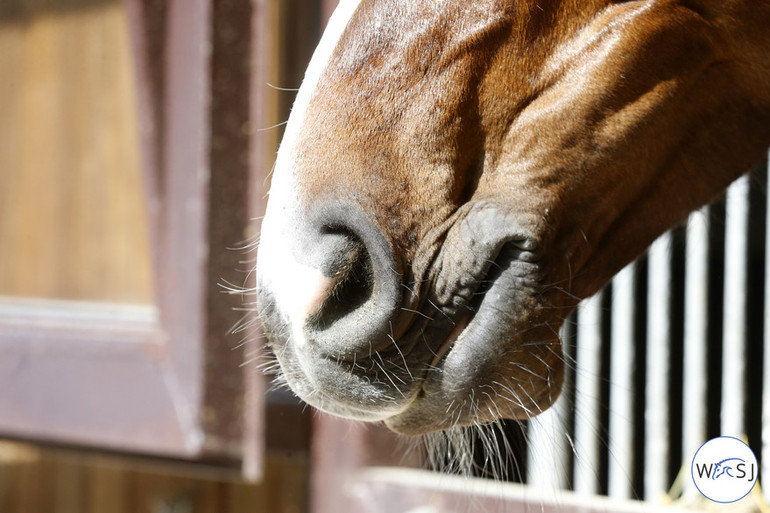Text © World of Showjumping
The International Jumping Riders Club (IJRC) has delivered its consultation response in regard to the revision of the FEI Anti-Doping Rules. The rules – for both human and equine athletes – are being revised this year for implementation on 1 January 2021.
The FEI Equine Anti-Doping and Controlled Medication Regulation (EADCMR) will undergo a full review in line with the introduction of the new WADA Code on 1 January 2021. While some changes to the EADCMR will be mandatory to ensure that the FEI remains WADA compliant, the FEI has scope to adapt the rules to reflect the specificities of equestrian sport in some areas. Prior to the revision process – which gets underway on 13 July – the FEI asked for feedback from stakeholders.
When it comes to the subject of contamination, the IJRC’s response is especially detailed. The IJRC’s position is that there should be more flexibility in contamination cases, as long as the contamination is non-performance enhancing. In this regard, the consultation response reads: “The riders feel that there is a high risk of accidental contamination on the way to and at many competitions. However, the IJRC would like to underline that it stands firmly against doping.”
The IJRC states that cases of contamination must be specifically addressed in a new regulation so that they no longer can “(…) give rise to analyses and expert reports that cost the person responsible (PR) a fortune as the PR in general does not have a pharmaceutical /analytical or toxicological background therefore outside the scope of their knowledge.”
It is emphasised that in cases of contamination, a clearer definition of the term is needed – not only based on detection techniques and theoretical procedures. The IJRC states that: “In any case, we would appreciate if the FEI were to determine more screening limits for more molecules. It is also necessary to set these screening limits for molecules classified as banned substances. Experience has shown that in many cases of contamination, banned substances are present. The classic case is poppy contamination.”
The IJRC also refers to the 2021 WADA Code and International Standards [Summary of Significant Changes p. 12, point 29] where it is stated that: “Rather than modify the rule in the current Code related to contaminated products, a better approach is to consider raising the reporting limits for those prohibited substances which are known contaminants”. The IJRC states that it would be logical to apply the same principle to horses, considering that horses “(…) cannot be guarded 24/7 and interrogated on everything they ate”.
In contamination cases, the Club is against keeping the minimum one-half of the standard sanction. Instead, the IJRC supports the introduction of a reprimand in case of non-significant faults/negligence from the athlete [WADA Code 2021 art.10.6]. In this regard, the consultation response reads: “In the case of inadvertent doping (Banned Substance, i.e. Sparteine/Lupinus; Synefrine; Colchicine /autumn crocus) due to contamination, when a court recognises the athlete’s innocence, and when the quantity of the substance detected has not enhanced performance (in fact in some cases substances can be damaging: Oripravine), the athlete should not suffer any negative consequences: neither ineligibility, nor monetary sanctions, nor loss of prizes. The norm could be limited to FEI events and exclude the Olympics.”
Underlined from the IJRC’s side when it comes to sanctions, is the principle of proportionality accepted by CAS [CAS sentence 2010/A/2268] and EU law – especially when talking about ineligibility. “This notion also needs be defined and understood in the context of person responsible (PR) as defined by the FEI and especially when these persons are minors. It will be highly appreciated to have a definition with examples,” reads the consultation response.
The IJRC also emphasises that the riders feel insecure under the current situation, as the anti-doping rules are highly demanding and do not reflect the actual stable security at FEI events. “There is a high risk of accidental contamination and we do agree that the equine community and FEI can improve how to mitigate the risk,” the Club states.
Furthermore, the IJRC states that it supports a review of the reporting limits for prohibited substances often found in supplements as well as establishing more thresholds for naturally occurring substances. The Club suggests having the thresholds close to where they are performance enhancing, and also supports raising the reporting limits for those prohibited substances which are known contaminants.
From the IJRC’s side it is proposed that the FEI extends their recommendations on contamination prevention to also include FEI event organizers. In this regard, the consultation response reads: “Many of the contamination cases occurs at the show ground or during travel. For the athletes is really difficult and unfair to prove were the contamination came from when the show’s hay or boxes are not his own nor handled with the same care and attention. The IJRC would much appreciate if FEI Event organizers are held to the same standard and rules as the riders, provide NOPS certificate or else riders cannot be held responsible and have to have the options to opt out of buy hay from shows.”









